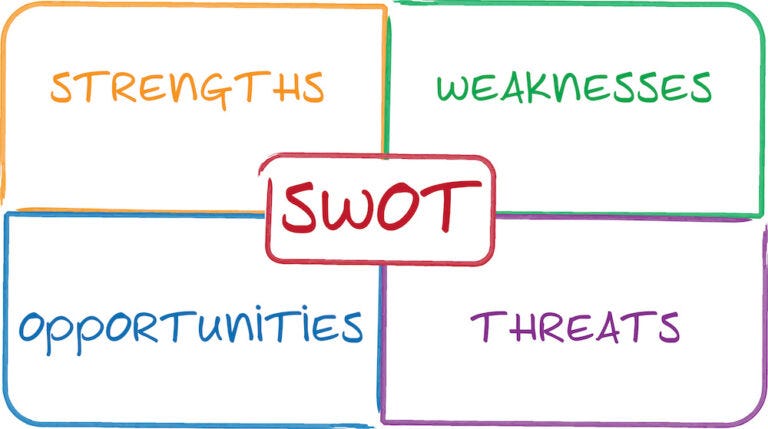"Who do you want to be when you grow up? A doctor, a teacher, a jet pilot?"
Like you, I have been asked this very same question a thousand times from a very young age (and even recently!). We might not realize it, but this question is about your vision in its purest form. It points you to your better future. It shows where you want to go.
In life, just like in business, having a vision is essential if you want to stand a better chance of success. But how do you even get started? What makes it a great one? Which traps should you avoid? Although it also works for any aspect of your life, here is more context on how to get it right when defining your product or business vision.
The context for your business vision
Yes, having a vision is essential. The better place you intend to reach someday gives you a sense of direction and focus. It helps provide proper motivation for you and your teams to grow and improve. It inspires you to take action. Make it healthy, and you will bear the unavoidable setbacks and frustrations on your path to the destination.
Please note vision is NOT your mission. It is not your strategy or your WHY, either. It is about the destination, the promised land (the WHERE and WHEN). In contrast, the mission is WHAT you do to reach that destination (think of the Amazon mission shared in a recent post). Then, the strategy is HOW you do it.
Sounds confusing? Let's take a simple example, our own Company, The Product Sherpa:
WHY in the first place, did we create The Product Sherpa? The closest answer is: We have been in business leaders' shoes and know how to positively impact product success and help reduce failure rates across the board.
Our business vision: WHERE do we see ourselves in three years? We will have helped tens of thousands of leaders and their teams become part of the "Successful 5%" with their products and businesses on track.
Our mission: WHAT are we doing to reach that destination? We help you optimize the business essentials that you cannot afford to break (vision, product portfolio health, profitability) and stand by your side as you implement the necessary changes.
Our strategy: HOW are we doing it? By offering custom business makeover programs. Designed with deep probing analysis and a sense of urgency in mind, these 60-day programs help you narrow down the most impactful changes you need to make and immediately establish the right implementation plan.
You get the idea. That's the foundation: you should not build your vision in a vacuum. It's part of a framework connecting the dots between your WHY, WHERE, WHEN, WHAT, and HOW.
Your business vision in 7 steps
Now that you have context for your business vision, here are a few fundamental steps to secure a healthy one:
1 - Know where you're coming from
Many new leaders make that mistake: they come in, wipe out the old vision, and start fresh. Don't disregard the past. Your business is where it is for many good reasons. Leverage what your organization has already learned, and focus on building a positive future to motivate all involved.
2 - Be bold AND credible
The world benefits from ultra-visionary leaders who dream BIG like Elon Musk. Yet most of us are better off avoiding the "pie in the sky" approach. A vision should be bold, but should also be rooted in the world of possibilities. Take into account your credibility, key attributes, and established trust, and use these as the foundation for your vision.
3 - Master your time horizon
A 3-year horizon view is where most businesses should focus. Longer-term thinking introduces complexity and increased volatility that you will likely have a hard time managing. Remember, your vision will evolve, and you will have ample opportunities to tune things (good or bad).
4 - Don't try to solve all your problems
Focus on a specific set of issues you currently face. A SWOT analysis can help in a big way to determine the ones you should solve first. Practice the 80/20 (Pareto Principle) to only focus on the most impactful problems. Addressing these should dramatically improve your future situation.
5 - Prepare for the worst, communicate the best
I advocate for every leader and their close strategic partners to practice solid scenario-building. Get ready for the worst and have plans in place in case such scenarios happen. But when it comes to your vision, focus your communication on a successful scenario. Again, it needs to be credible, but it's the positive outcome that will motivate everyone around you to act.
6 - Enlist help as you define your business vision
We've all heard the proverb: "If you want to go fast, go alone; if you want to go far, go together." Enlist help, especially when it comes to analyzing your SWOT. Identifying together, the obstacles that prevent you from accomplishing your goals will go a long way. You might still disagree on the desired outcome. That's where involving them in the analysis, and having ample opportunity to explain why you're heading in that direction is critical.
7 - Communicate, communicate, communicate!
Once you have progressed enough, don't keep your vision secret! It is what will motivate all your key stakeholders. So, hit the road and be on a "mission" to spread the word to all who matter: team members, other teams, the board, partners, customers, shareholders, investors... Once you think it's over, hit the road again and keep repeating!
Building a bullet-proof business vision is no easy task, but it helps maximize your chances of success in the long run. Just remember: be bold, not reckless, keep the vision alive through constant action, and evangelize, educate, keep educating!





